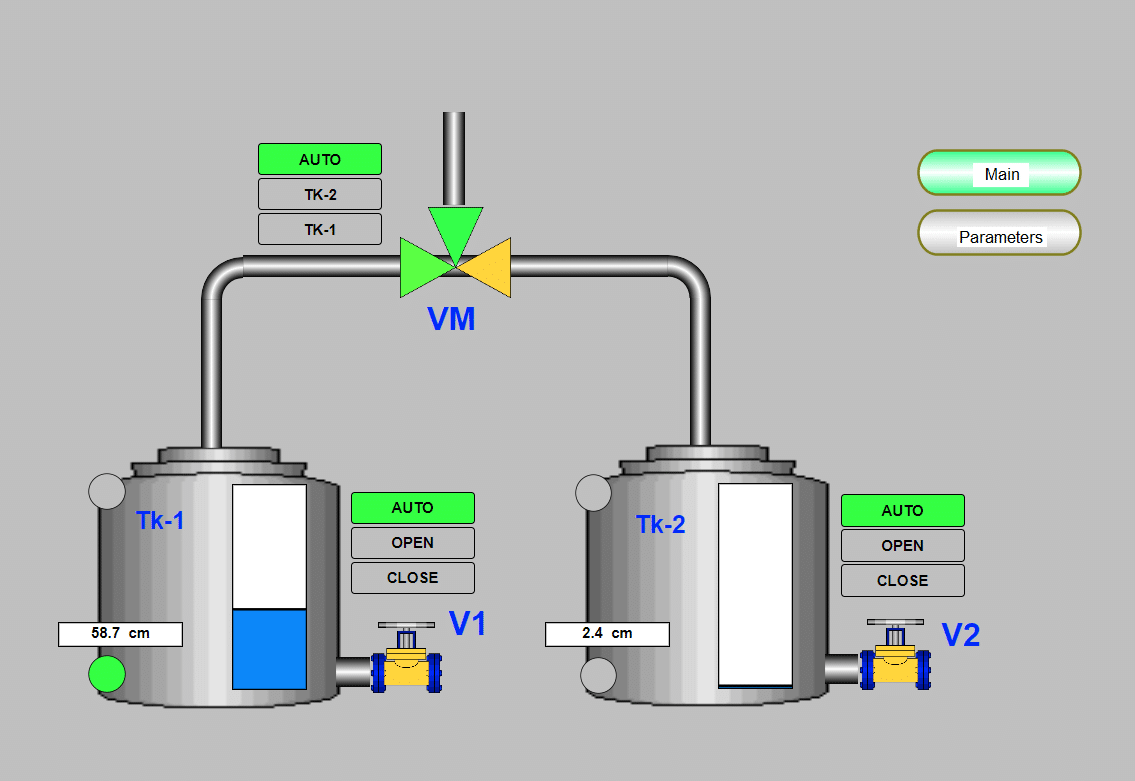 The Containers. Photo by Ofer Snir
The Containers. Photo by Ofer Snir About three years ago, during a storm that hit Tel Aviv, a young couple died tragically in an elevator flooded at an underground parking lot. This event took place after many Israeli winters saw days of roads turning into rivers and city streets transforming into streams. The solution to this problem is already well known: the municipal drainage systems, which cannot withstand the load of the rains, need an urgent major overhaul.
Since the death of the young couple, the danger of floods in cities has become crystal clear. Yet, the overhaul in question would be complicated and expensive, so the various authorities are in no hurry to do so. A new study, conducted at the Technion and recently presented at the biannual student conference of the Grand Water Research Institute (GWRI) at the Technion, attempts another solution to the situation. It is a simple, cheap, and quick construction that may reduce the pressure urban infrastructure experiences on rainy days. This system consists of containers on building rooftops that can accumulate rainwater and of a computerized system to release it when the sewage systems can handle it. Could this design put an end to urban floods?
Much rain, little time
In recent winters, we have all seen images of flooded streets and cars submerged underwater; some of us have even found ourselves in the middle of such events. But how does that even happen? How do floods form in Israeli cities?
One reason is that rain events in Israel tend to be intense and short – that is, a large amount of rain falls during a short period of time. For comparison, the average annual amount of precipitation in rainy London is similar to that of Tel Aviv, but in London this amount spreads over the whole year – and in Tel Aviv it is limited to the winter months only. This problem is expected only to worsen due to the climate crisis, which causes the severity of the rain events in Israel only to rise.
Secondly, when it rains in urban areas, it flows mainly over concrete or asphalt surfaces which do not let water seep into the ground. This mechanism is what creates urban runoff: rainwater, moving across sidewalks and roads, drains into lower areas or the municipal drainage system. Such waterproof surfaces, that don’t let rainwater seep through, are expanding rapidly – with the urban development and the constant increase in the rate of construction throughout Israel, which also comes at the expense of open areas.
The new system may help prevent flooding due to the increasing urban runoff. It consists of water tanks placed on rooftops to accumulate rain and of a smart system to control the release of water into the municipal drainage system when it is at low capacity. How significant is this invention? It may reduce the load on urban infrastructure by 20–30 percent. In addition, residents of buildings with such water tanks can use water stored in them for various purposes, such as flushing toilets or dishwashing.

Serendipitous discovery
The new research was led by Prof. Eran Friedler of the Environmental, Water, and Agricultural Engineering Unit at the Faculty of Civil and Environmental Engineering at the Technion, and Ofer Snir, a Ph.D. student at the Faculty, in collaboration with Prof. Luca Vezzaro of the Technical University of Denmark. Initially, the researchers were not looking for a possible solution to urban flooding. In fact, they intended the first study they conducted for a different purpose: examining the benefits of using rainwater for water consumption in urban households.
“Our research focused on saving drinking water – an expensive product in short supply in Israel,” Friedler explains. According to him, using desalinated water for purposes like flushing toilets is also a waste. “Therefore, any invention that will reduce the demand for desalinated water – and consequently the energy consumption required for desalination – with the help of a simple means that makes the city more sustainable – is welcome,” he says. Indeed, the computerized system evaluates the water consumption of the tenants – and tries to provide them with the necessary amount from the storage tanks to prevent the use of drinking water or desalinated water for purposes that do not require it.
In the follow-up study – the one presented at the conference – the researchers examined container efficiency with the help of a computer model. “We simulated a residential neighborhood in the central region of Israel that has about 150 residential buildings: we mapped its roofs and measured the capabilities of its central drainage system,” Friedler tells us. “We simulated a neighborhood where each building has a storage of 10 cubic meters (10,000 liters – J.S.).” In addition to the parameters of the neighborhood, the model also received the weather conditions that prevailed in the neighborhood during two extreme rain events in Israel: the storms of late February 2010 and late November 2020.
Water tanks – soon on your rooftop?
As mentioned above, the computerized experiment showed a reduction of more than 20 percent of the load on the drainage system in the simulated neighborhood when using the new design. This figure highlights the benefits of the new system. Since it is relatively simple, it may be the cheapest and fastest solution for mitigating urban floods. According to Friedler, many urban neighborhoods already have gutters to drain rainwater, so the next step is simple: connect them to tanks at the bottom of the building or underground.
According to Friedler, roofs make up about 40 percent of the waterproof area in the city, which is not a negligible part. “If this design is implemented in new neighborhoods, it will be possible to plan smaller drainage systems in the first place – so the financial saving may be large,” he explains.
At the same time, the researchers emphasize that this invention will only solve some of the flooding incidents in cities. One of the reasons for this is that when it rains intensely and without stopping, the tanks do not have a low moment when they can release the excess water into the drainage systems. “Therefore, such a method of collecting rainwater can only be a ‘first line of defense’ in a system controlling and monitoring the drainage system. For very extreme events (such as the events of late November 2020 – J.S.), however, it will not be enough,” explains Snir.
Another method, which is very durable, and has been used for many years around the world (including rainier areas than Israel), is rainwater harvesting, in which precipitation can seep into the ground next to the place where it fell. For this reason, waterproof surfaces (such as parking lots, sidewalks, traffic islands, etc.) must be made porous. This change can be done by building them from materials that allow percolation or piercing holes in waterproof surfaces for water to flow through. Additionally, planting perennial vegetation with roots will accelerate percolation.
These days, the researchers are already working on follow-up studies, which will test the system over longer times and on a more extensive scale. So if rainwater storage tanks become a common sight next to multi-story buildings in Israel in a few years – remember where you heard about them first.

This article was prepared by ZAVIT – The News Agency of the Israeli Society of Ecology and Environmental Sciences























 More news and opinions than at a Shabbat dinner, right in your inbox.
More news and opinions than at a Shabbat dinner, right in your inbox.